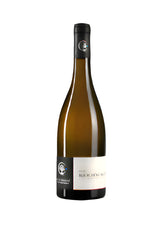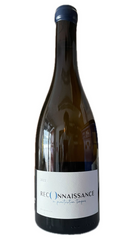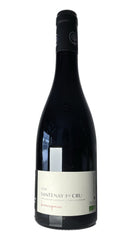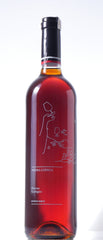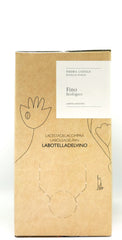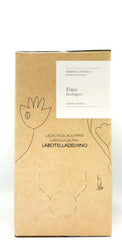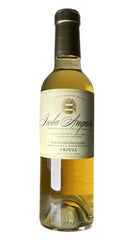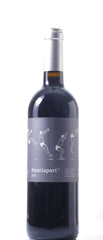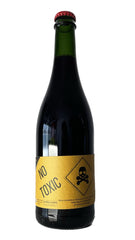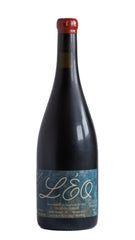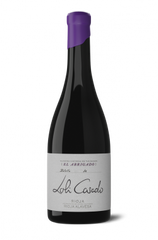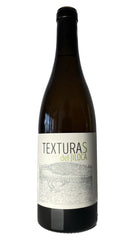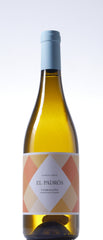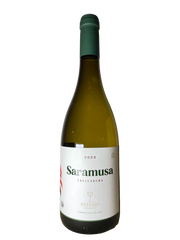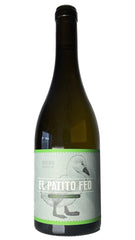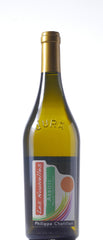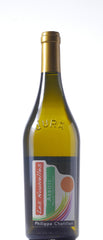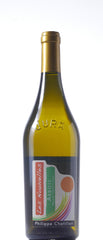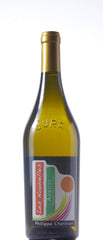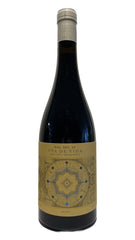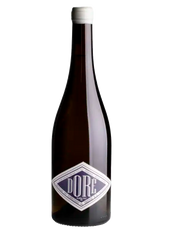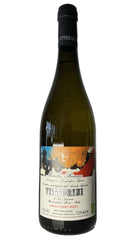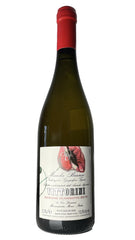Aline Beaune
Whilst 2018 may well be Aline Beauné’s first ever solo vintage, she’s no stranger to winemaking in the Cote Chalonnaise. For 15 years she has been heading up the winemaking for Château de la Crée (a domaine based in nearby Santenay) when a few years ago she decided it was time to do it all herself. So when the Buxy co-operative’s lease on 5ha of her families 12ha of Montagny vines came to an end she jumped at the chance. Her 5ha are found in the commune of Saint-Vallerin and are split between; 12.5% Aligoté, 25% Bourgogne Blanc, 50% Montagny Villages and 12.5% Montagny 1er cru Chazelle. Aline really is just at the beginning of her journey and with her skills and experience, exellent vines as her raw materials, and a modern vision and passion to build and develop her wines I think she’ll take them a long long way.
Aline Beauné
Bourgogne Aligoté
2023
Burgundy
—
Aligoté
Acidity,
Cream soda,
Creamy,
Dragon-fruit,
Fresh,
Lemon,
Aline Beauné
Bourgogne Blanc
2022
Burgundy
—
Chardonnay
Hazelnuts,
Lemon,
Long,
Pear,
Salty,
Structured,
Aline Beauné
Montagny Villages
2021
Burgundy
—
Chardonnay
Acidity,
Dry,
Grapefruit,
Lemon,
Powerful,
Stones,
Aline Beauné
Reconaissance
2022
Burgundy
—
Chardonnay
Acidity,
Lemon,
Lemon thyme,
Lime,
Long,
Stony,
Aline Beauné
Montagny 1er Cru Chazelle
2022
Burgundy
—
Chardonnay
Amalfi Lemon,
Creamy,
Floral,
Grapefruit,
Oak,
Papaya,
Aline Beauné
Santenay 1er Cru Beaurepaire
2020
Burgundy
—
Pinot Noir
Acidity,
Juicy,
Liqourice,
Long,
Red berries,
Rose petals,
Aline Beauné
Santenay 1er Cru Beaurepaire
2021
Burgundy
—
Pinot Noir
Acidity,
Juicy,
Liqourice,
Long,
Red berries,
Rose petals,
Liquid error (templates/page.trade-list line 186): comparison of String with 2 failed
Batard Langelier
Jeremie and his wife Claire are third generation winemakers responsible for around 24 hectares of vines (averaging 40 years old) in the Muscadet Sevre et Maine appelation to the SE of Nantes. Found a mere 50km away from the Atalantic the true joy in their wines, and the reason I have taken 4 cuvees from the same one single grape (Melon de Bourgogne), is the variety of soils on which it grows and varying time it spends aging on its lees.
Batard Langelier
Les Prieres
2022
Loire
—
Melon de Bourgogne
Apple,
Bright,
Fresh,
Lime,
Saline,
Zesty,
Batard Langelier
Les Prieres
2023
Loire
—
Melon de Bourgogne
Apple,
Bright,
Fresh,
Lime,
Saline,
Zesty,
Batard Langelier
Le Besson
2022
Loire
—
Melon de Bourgogne
Creamy,
Dense,
Lemon,
Lime,
Mineral,
Stones,
Batard Langelier
Metaphore
2021
Loire
—
Melon de Bourgogne
Cake,
Juicy,
Mango,
Mouthwatering,
Passionfruit,
Textured,
Batard Langelier
Oxymore
2018
Loire
—
Melon de Bourgogne
High acidity,
Honey,
Intense,
Lemon,
Mineral,
Pear,
Batard Langelier
Pensées Nocturnes
2020
Loire
—
Folle Blanche
Bone-dry,
Green-apple,
Lemon,
Mineral,
Tense,
Vanilla,
Batard Langelier
Chateau Thébaud
2019
Loire
—
Melon de Bourgogne
Amalfi Lemon,
Apple,
Beeswax,
Concentrated,
Mineral,
Smooth,
Robles
Bodegas Robles is a 32-hectare family owned Bodega that has been producing sherry style Montillas since 1927. In 1999, under 3rd generation siblings Francisco and Pilar, they became certified organic and turned their attention to several agro-environmental projects to improve soil quality, help retain moisture and using crop cover to encourage new flora and insects to the vineyards. They pride themselves on sustainability, eschewing the use of excessive packaging and ideally only want to sell their Fino & Sweet PX in BIB – hence the brilliant price!
Robles
Miguel Galadi Fino
NV
Montilla-Moriles
—
Pedro Ximenez
Capiscum,
Fresh,
Pineapple,
Powerful,
Smokey,
White Flowers,
Robles
Miguel Galadi PX
NV
Montilla-Moriles
—
Pedro Ximenez
Concentrated,
Fig,
Nuts,
Raisins,
Rich,
Syrupy,
Robles
Miguel Galadi Oloroso
NV
Montilla-Moriles
—
Pedro Ximenez
Apple,
Classic,
Raisins,
Savoury,
Silky,
Walnut,
Robles
5L Miguel Galadi Fino
NV
Montilla-Moriles
—
Pedro Ximenez
Capiscum,
Fresh,
Pineapple,
Powerful,
Smokey,
White Flowers,
Robles
Miguel Galadi Oloroso 5L
NV
Montilla-Moriles
—
Pedro Ximenez
Apple,
Classic,
Raisins,
Savoury,
Silky,
Walnut,
Robles
Miguel Galadi PX 5L
NV
Montilla-Moriles
—
Pedro Ximenez
Concentrated,
Fig,
Nuts,
Raisins,
Rich,
Syrupy,
Liquid error (templates/page.trade-list line 234): comparison of String with 2 failed
Liquid error (templates/page.trade-list line 250): comparison of String with 2 failed
Clos 93
Clos 93 was the 93rd winery (Clos) to register with the Consejo Regulador de Priorat, created 10 years ago by brothers Rubén & Josep Sabaté, alongside their uncle Pepo, in whose house & garage they carefully craft the wines.
The grapes come from vines in the town of El Lloar, where they are just one of two wineries. With some 108 wineries now registered in Priorat, Clos 93 may not be the newest, but it is officially recognised as the smallest: producing just 12,500 bottles.
Clos 93
L'Interrogant
2023
Priorat
—
Grenache
Balsamic,
Blackcurrant,
Juicy,
Mouthwatering,
Plum,
Powerful,
Clos 93
Parèntesis
2022
Priorat
—
Garnacha Blanca
Caramel,
Honeyed,
Layered,
Long,
Peach,
Yellow Plum,
Clos 93
L’Exclamació
2020
Priorat
—
Syrah
Blackcurrant,
Chocolate,
Good Tannins,
Intense,
Raspberry,
Savoury,
Clos 93
Vi de Vila El Lloar
2018
Priorat
—
Carignan
Blackcurrant,
Cherry,
Good Tannins,
Pepper,
Powerful,
Structured,
Clos 93
Parèntesis Magnum
2023
Priorat
—
Garnacha Blanca
Caramel,
Honeyed,
Layered,
Long,
Peach,
Yellow Plum,
Clos 93
Vi de Vila El Lloar
2017
Priorat
—
Carignan
Blackcurrant,
Cherry,
Good Tannins,
Pepper,
Powerful,
Structured,
Clos 93
L’Exclamació Magnum
2018
Priorat
—
Syrah
Blackcurrant,
Chocolate,
Good Tannins,
Intense,
Raspberry,
Savoury,
Liquid error (templates/page.trade-list line 346): comparison of String with 2 failed
Liquid error (templates/page.trade-list line 362): comparison of String with 2 failed
De Stefani
The De Stefani family began producing wine at the Colvendrame estate, between Conegliano and Valdobbiadene. Generations later, in the 1960's, they bought vines in the Piave Valley (Pra' Longo estate) and in Fossalta di Piave (Le Ronche estate) where they set up a new base and winery. Both enjoy exceptional micro-climates, due to the nearby Adriatic, the Dolomites Alps and the surrounding hills as well as a very particular “caranto” soil: a mix of Alpine white clay and minerals. Today Alessandro De Stefani produces organic wines under a very natural philosophy from old, high density, low yield vineyards. He pays homage to native varieties (like Marzemino and Raboso) and has an annual production of just 300.000 bottles from over 100 acres of vineyard. The winery only uses solar power and is 100% carbon neutral.
De Stefani
Blanc de Blanc Brut
NV
Veneto
—
Glera
Bright,
Chalk,
Dry,
Elegant,
Pear,
Pineapple,
De Stefani
DS Brut Millesimato
2023
Veneto
—
Glera
Delicate,
Guava,
Moorish,
Pear,
Smooth,
White-flowers,
De Stefani
Terre Nobili
2022
Veneto
—
Merlot
Bright,
Cherry,
Juicy,
Raspberry,
Smooth,
Sweet-spice,
De Stefani
Venezia
2021
Veneto
—
Merlot
Juicy,
Plums,
Smooth,
Strawberry,
Supple,
Sweet-spice,
De Stefani
Soler
2021
Veneto
—
Merlot
Blackcurrant,
Dried-fruit,
Explosive,
Plum,
Rich,
Structured,
De Stefani
Soler Magnum
2021
Veneto
—
Merlot
Blackcurrant,
Dried-fruit,
Explosive,
Plum,
Rich,
Structured,
De Stefani
Olmera
2011
Veneto
—
Tocai Friulano
,
De Stefani
Stefen 1624
2016
Veneto
—
Marzemino
,
Liquid error (templates/page.trade-list line 394): comparison of String with 2 failed
Liquid error (templates/page.trade-list line 410): comparison of String with 2 failed
4
Isola Augusta
It was only in 1959 that Isola Augusta's founder, Renzo Bassini, first saw potential in the Friuli-Venezia Giulia clay soils and vineyards in which sits the modern day winery. Replanting old vines and renovating the outhouses they were quick to modernise, replacing many of the chemical interventions with physical processes and even pioneering the use of cold fermentation in the region.
Isola Augusta
Verduzzo Friulano
2022
Friuli
—
Verduzzo Friulano
Apricot,
Bright,
Honey,
Pastry,
Peach,
Savoury,
Isola Augusta
Schioppettino
2022
Friuli
—
Schioppettino
Cherry,
Cloves,
Juicy,
Smokey,
Soft,
Strawberry,
Isola Augusta
Friulano
2022
Friuli Latisana
—
Friulano
Broad,
Creamy,
Melon,
Peach,
Soft,
Vanilla,
Isola Augusta
Schioppettino
2021
Friuli
—
Schioppettino
Cherry,
Cloves,
Juicy,
Smokey,
Soft,
Strawberry,
Liquid error (templates/page.trade-list line 443): comparison of String with 2 failed
La Vinyeta
La Vinyeta is a collection of small vineyards and olive groves in the heart of the Empordá, in an area called Mollet de Peralada. A young, family owned business it began some 15 years ago when Josep Serra purchased two old Carignan and Grenache vineyards – aged 55 and 80 years old – and kept on planting. The winery now stands at a reasonable 30 hectares. It was a few years later in 2006 that the winery was built and the first vintages of were made from over 10 varieties. In 2009 La Vinyeta became one of the first vineyards to adopt Integrated farming in the region which it has continued to develop and evolve over time.
Àlbum is born from the desire to return to the roots. Production of 180 bottles of maximum authenticity: old Carinyena vineyard harvested, stomped, and spontaneously fermented in ceramic containers in the vineyard, replicas of ancient Roman dolias, buried in the ground. Gentle pressing in a traditional manual press.
La Vinyeta
Heus* Blanco
2020
Emporda
—
Macabeo
Aromatic,
Bitter,
Dusty,
Guava,
Juicy,
Passion-fruit,
La Vinyeta
Heus* Tinto
2021
Emporda
—
Carignan
Bramble,
Cherry,
Chocolate,
Good Tannins,
Juicy,
La Vinyeta
Heuss* Blanc
2023
Emporda
—
Xarel-lo
Almond,
Apricot,
Floral,
Fresh,
Green Plum,
Smooth,
La Vinyeta
Llavorrs
2021
Emporda
—
Carignan
Cherry,
Chocolate,
Concentrated,
Dry,
Powerful,
Redcurrant,
La Vinyeta
Puntiapart Magnum
2018
Emporda
—
Cabernet Sauvignon
Blackcurrant,
Dark,
Dry,
Peppery,
Smoke,
Strawberry,
Les Reves Oublies
On my Tour de France this January, upon leaving Bordeaux on my way to the Northern Rhone, I realised I had no winemakers to visit and break up the 500km trip. So, I found the number of Gilles Bonnefoy’s (Vins de la Madonne - a much respected winery in the Eastern Loire) and never having spoken, phone him up to ask him for any hot tips. It so happened that he had just started renting some of his old, organic Gamay vines to a young up-and-coming winemaker called Nadia Beaune who, he says, is making a very tasty wine. So come 7PM I arrive at the house/garage/winery and whilst Nadia wasn’t there, I tasted for hours with her incredibly kind boyfriend (and winemaker) Maxime. Together they have taken it upon themselves to treat the fruit of these exceptional, high quality old vines with the maximum respect and minimal intervention. They started in 2018 by making a single juicy, concentrated Gamay Pet Nat and with a number of other cuvées lined up, it won't be long before I have more.
Les Reves Oublies
No Toxic
2022
Loire
—
Gamay
Clack cherry,
Concentrated,
Electric,
Juicy,
Strawberry,
Sweet-spice,
Les Reves Oublies
Cuvee Léo
2022
Loire
—
Gamay
Black cherry,
Elegant,
Jam,
Juicy,
Raspberry,
Textured,
Loli Casado
Bodegas Loli Casado is a small family owned and family run winery in Rioja Alavesa that is as traditional and nostalgic as they come. They have 25 hectares of their own vines 425-500 metres above sea level of varying ages; 9 hectares over 70 years old, 12 between 30 and 45 and 4 hectares of newly planted vines younger than 10 years old. The current Bodega was founded by Luis in 1970 and in 2000, upon his retirement, was taken over by Loli and her husband. Whilst modernising and adapting their traditional Bodega to modern times, using a mix of French and American fine oak, they have continued to produce around 150,000 bottles a year across two very highly regarded Rioja lines, Juan de Alzate and Polus.
Coming Soon
Loli Casado
Jaun de Alzate Semicrianza
2023
Rioja
—
Tempranillo
Blackberry,
Cherry,
Dusty,
Fresh,
Savoury,
Vanilla,
Loli Casado
Jaun de Alzate Semicrianza
2022
Rioja
—
Tempranillo
Blackberry,
Cherry,
Dusty,
Fresh,
Savoury,
Vanilla,
Loli Casado
Jaun de Alzate Crianza
2021
Rioja
—
Tempranillo
Cherry,
Classic,
Cloves,
Forest-fruits,
Leather,
Savoury,
Loli Casado
Jaun de Alzate Crianza
2022
Rioja
—
Tempranillo
Cherry,
Classic,
Cloves,
Forest-fruits,
Leather,
Savoury,
Loli Casado
Jaun de Alzate Crianza Magnum
2020
Rioja
—
Tempranillo
Cherry,
Classic,
Cloves,
Forest-fruits,
Leather,
Savoury,
Loli Casado
El Abrigado
2019
Rioja
—
Graciano
Cherry,
Complex,
Damson,
Dry,
Mineral,
Plum,
Modat
Domaine Modat is a modest 25 hectares of vines found in the commune of Cassagnes in the Agly Valley, 30km due west of Perpignan and 200-300m above sea level. Upon founding the estate in 2007, Philippe Modat has worked the vines organically (achieved certification in 2014) and biodynamically (not yet certified) and having moved back to working as a lawyer he has left it in the safe hands of his dynamic and hard working sons (all by the way under the age of 30). The vineyards themselves are composed predominantly of well drained Gneiss, in which are grown indigenous red and white Roussillon varieties - including 115-year-old Carignan. In the last 10 years they have built a modern carbon neutral winery and embraced biodynamic viticulture, working with restrained extraction, fermentation on wild yeasts and as little sulphur as possible.
Modat
Le Petit Mod’Amour Rouge
2021
Cotes Catalanes
—
Carignan
Coffee,
Concentrated,
Forest-fruits,
Juicy,
Plum,
Silky,
Modat
Le Petit Mod'Amour Rosé
2022
Cotes Catalanes
—
Grenache
Cherry,
Concentrated,
Grapefruit,
High-acidity,
Textured,
Vanilla,
Modat
Le Petit Mod'Amour Blanc
2022
Cotes Catalanes
—
Muscat
Apricot,
Floral,
Luscious,
Peach,
Textured,
Yoghurt,
Modat
Le Petit Mod’Amour Rouge
2022
Cotes Catalanes
—
Carignan
Coffee,
Concentrated,
Forest-fruits,
Juicy,
Plum,
Silky,
Modat
Le Petit Mod'Amour Blanc
2023
Cotes Catalanes
—
Muscat
Apricot,
Floral,
Luscious,
Peach,
Textured,
Yoghurt,
Modat
De-ci De-la
2019
Cotes Catalanes
—
White Grenache
Apple,
Creamy,
Pastry,
Pear,
Silky,
Vanilla,
Modat
De-ci De-la
2018
Cotes Catalanes
—
White Grenache
Apple,
Creamy,
Pastry,
Pear,
Silky,
Vanilla,
Modat
Comme Avant
2018
Cotes Catalanes
—
Carignan
Blackcurrant,
Chocolate,
Concentrated,
Mulberry,
Rich,
Savoury,
Modat
Comme Avant
2016
Cotes Catalanes
—
Carignan
Blackcurrant,
Chocolate,
Concentrated,
Mulberry,
Rich,
Savoury,
Modat
Les Lucioles
2021
Cotes Catalanes
—
Roussane
Apple,
Apricot,
Fennel,
Fleshy,
Powerful,
Silky,
Modat
Le Plus Joli
2018
Cotes Catalanes
—
Syrah
Black fruits,
Chocolate,
Coffee,
Damson,
Powerful,
Smokey,
Modat
Les Lucioles Magnum
2019
Cotes Catalanes
—
Roussane
Apple,
Apricot,
Fennel,
Fleshy,
Powerful,
Silky,
Liquid error (templates/page.trade-list line 539): comparison of String with 2 failed
Mongarda
Mongarda only started back in 1978 when Bruno, having picked up bits and bobs on winemaking from his grandfather, decided to give it a go and bought a single vineyard with his wife Marinella; it was called Mongarda. Now the 10 hectare estate, spread around the village of Col San Martino and in the heart of the Valdobbiadene-Conegliano Prosecco Superiore zone, is run by their son Martino who has maintained their ethos of natural, simple, low intervention winemaking. The majority of the vineyards are on steep slopes with old vines (the Mongarda vineyard dates from the 1950's) and poor, lime conglomerate rocky soils where they pick and ferment ancient permitted Prosecco varieties, Perera, Verdiso, Bianchetta, and Boschera together with Glera.
Mongarda
Col Fondo
2022
Veneto
—
Glera
Chalky,
Fresh,
Lemon,
Pear,
Refreshing,
White-flowers,
Mongarda
Col Fondo
2023
Veneto
—
Glera
Chalky,
Fresh,
Lemon,
Pear,
Refreshing,
White-flowers,
Mongarda
Brut Millesimato
2023
Veneto
—
Glera
Chalky,
Dry,
Floral,
Grapefruit,
Pear,
White-flowers,
Mongarda
Col Fondo Magnums
2023
Veneto
—
Glera
Chalky,
Fresh,
Lemon,
Pear,
Refreshing,
White-flowers,
Liquid error (templates/page.trade-list line 603): comparison of String with 2 failed
Oriol Perez de Tudela
Oriol was born in Valls, a small town inland of Tarragona well known for its Calçots (Catalan leeks) and it's Castells (human tower). Growing up he used to help his uncle in the vineyards and cellars he managed for the local co-operative. Oriol ended up working in Telecomms but realised his work meant little to him. So he quit and started helping his uncle, and soon, having met a chemical engineer from Torres produced BIB “El Vi a Punt” together. Here he caught Rene Barbier’s attention and both having roots in Tarragona, started to produce wine together. Escabeces is the name of a small town in Tarragona where 99% of this rare Cartoixa Vermell (just a few vineyards) is planted.
Oriol Perez de Tudela
Texturas de Jiloca
2020
Tarragona
—
Macabeo
Guava,
Pear,
Quince,
Ripe,
Vanilla,
Yellow-apple,
Oriol Perez de Tudela
El Padrós
2019
Tarragona
—
Macabeo
Acidity,
Bright,
Kumquat,
Saline,
Satsuma,
Vanilla,
Oriol Perez de Tudela
Escabeces
2021
Tarragona
—
Cartoixa Vermell
Broad,
Dried-fruit,
Grapefruit,
Mineral,
Peach,
Textured,
Pateiro
Iván Vázquez Pateiro's story is very similar to that of many winemakers of his generation. Coming from a long long line of winegrowers he would watch and help his grandparents and parents tend their vines to sell to the local co-operative. Originally from Ribadavia, Iván worked - and actually still continues to work - for many wineries, beofre moving some 20km further north up the river Avia to the town of Beade. Here, with his business partner, he bought a few acres of vines to start thei own project, El Patito Feo and Saramusa! He uses only indigenous varitires (Caiño, Souson and Treixadura) where he makes a 100% Treixadura - something that few other winemakers in the region are doing. But nostalgia aside he beleives it is not about making the same wines your parents make, but rather to improve and advance them. 2018 is ony Iván's second vintage to date but already he is starting to make some incredibly expressive and aromative wines.
Pateiro
Saramusa
2023
Ribeiro
—
Treixadura
Apple,
Aromatic,
Herbs,
Juicy,
Kiwi,
Silky,
Pateiro
El Patito Feo Treixadura
2021
Ribeiro
—
Treixadura
Aromatic,
Basil,
Creamy,
Mineral,
Passionfruit,
Pineapple,
Pateiro
El Patito Feo Barrica
2021
Ribeiro
—
Caiño Longo
Cherry,
Cocoa,
Concentrated,
Cranberry,
Fresh,
Savoury,
Pateiro
El Patito Feo Barrica
2022
Ribeiro
—
Caiño Longo
Cherry,
Cocoa,
Concentrated,
Cranberry,
Fresh,
Savoury,
Pateiro
El Patito Feo Treixadura
2023
Ribeiro
—
Treixadura
Aromatic,
Basil,
Creamy,
Mineral,
Passionfruit,
Pineapple,
Pateiro
El Patito Feo Godello
2022
Ribeiro
—
Godello
Almond,
Apple,
Concentrated,
High acidity,
Oily,
Pear,
Philippe Chatillon
Philippe Chatillon was estate manager at the much celebrated Arbois winey of Domaine de La Pinte for close to 18 years. And after a good stint managing another's, in 2013, he decided he wanted to create his own, finding and buying a hillside plot of Savagnin in Passenans with which to work. Soon he added plots of Melon a Queue Rouge, Pinot Noir, Tousseau and Chardonnay before exchanging his original Savagnin plot for another worked only biodynamically. He works his steep marl rich vineyard by hand, without the use of any chemical fertilizer what so-ever. The soils are aided by biodynamic preparations and in the cellar he uses old oak, spontaneous fermentations and bottles without fining, filtration and with no added sulphur. If that's not enough in the cellar he works in bio-harmony, using sounds vibrations from his harp to aid in the wines balance.
Philippe Chatillon
Arbois, Les Nouvelles
2017
Jura
—
Savagnin
Bright,
Chamomile,
Fresh,
Lemon,
Oxidative,
Pineapple,
Philippe Chatillon
Cotes du Jura, Chardonnay
2018
Jura
—
Chardonnay
Almond,
Amalfi lemon,
Nut,
Oxidative,
Pineapple,
Zippy,
Philippe Chatillon
Côtes du Jura, En marche
2019
Jura
—
Melon à queue rouge
Apricot,
Powerful,
Roasted-nuts,
Salty,
Spicy,
Yellow-Apple,
Philippe Chatillon
Arbois, Le Sage Vagnin
2018
Jura
—
Savagnin
Butter,
High acidity,
Juicy,
Pineapple,
Powerful,
Yellow Plum,
Philippe Chatillon
Arbois, Les Nouvelles
2014
Jura
—
Savagnin
Bright,
Chamomile,
Fresh,
Lemon,
Oxidative,
Pineapple,
Philippe Chatillon
Arbois, Le Sage Vagnin
2020
Jura
—
Savagnin
Butter,
High acidity,
Juicy,
Pineapple,
Powerful,
Yellow Plum,
Uva de Vida
Uva de Vida (“The Grape of Life”), est. 2012 , is the vision of wife and husband team Carmen Lopez Delgado and Luiz Ruiz Martin. Based in Santa Olalla, 50km west of Toledo, Carmen makes half a dozen wines from their 9hct property centered on Graciano, an uncommon variety in the region. Following strict natural and biodynamic processes, both in the vines and the winery, Carmen doesn’t filter, clarify or add sulfites at any point saying they “they are toxic and, for wine, they are an atomic bomb”. Through invigorating the life of the soil, the use of sonar energy and no intervention in the wine they are creating structured, elegant, fresh nd pure wines. The winery is a member of the tiny prestigious biodynamic association “La Renaissance des Appellations”, chaired by Nicolas Joly.
Uva de Vida
Sol del 19
2019
Castilla–La Mancha
—
Graciano
Blackcurrant,
Blueberry,
Cherry,
Floral,
Smoky,
Spice,
Uva de Vida
Biografico Roble
2016
Castilla–La Mancha
—
Graciano
Blackberry,
Blueberry,
Cola,
Concentrated,
Dark,
Feiry,
Uva de Vida
Latitud 40 Roble
2014
Castilla–La Mancha
—
Graciano
Bacon,
Cherry,
Good Tannins,
Juicy,
Raspberry,
Uva de Vida
Esencia Oxidativa
NV
Castilla–La Mancha
—
Graciano
Amarena,
Dried fruit,
Nutty,
Oxidative,
Salty,
Strawberry,
Vinadores de Gredos
Ruben Diaz is born and bred in Cebreros, Avila, one of the principal villages at the forefront of the Gredos wine reawakening. And he, like his much more celebrated and better known peer Dani Landi, is one of the emblematic winemakers of the area. He believes that Garnacha is a part of his DNA. It was back in 1999 when the rights to their land were about to be sold that Ruben went to check out the vines. He's never been involved but studied, learnt from others and fell in love with Gredos Garnacha. He is interested in keeping wine keeping as it has been done for 100's of years , with minimal intervention to truly express the exact state of the soil, the winemaker, the vineyard and the weather to the glass. He doesn't use a single non-organic solution. "I'm happy with my work, and they say that it always shows in the results".
Vinadores de Gredos
Paso de Cebra
2019
Gredos
—
Albillo
Almond,
Aromatic,
Floral,
Pear,
Textured,
White-flowers,
Vinadores de Gredos
Escalera
2019
Gredos
—
Garnacha
Bright,
Cherry,
Cranberry,
Fennel,
High acidity,
Mineral,
Vinadores de Gredos
Dore&+
2023
Gredos
—
Chasselas
Aromatic,
Floral,
Preserved lemon,
Salt,
Smoke,
Tangerine,
Vinadores de Gredos
La Bota de Dore
2019
Gredos
—
Chasselas Dore
Fine,
Floral,
Olives,
Pear,
Quince,
Salty,
Vinadores de Gredos
Fiorel-la
2021
Gredos
—
Chasselas Dore
Floral,
Ginger,
Juicy,
Mineral,
Peach,
Yellow Flower,
Vinadores de Gredos
Cuesta del Tejar
2018
Gredos
—
Garnacha
Blackberry,
Capiscum,
Dusty,
Good Tannins,
Mineral,
Violets,
Vinadores de Gredos
Sorpresa Garnacha Crianza
NV
Gredos
—
Garnacha
Earthy,
Fig,
Leather,
Long,
Nutty,
Plum,
Vinadores de Gredos
Surprise Chasselas
NV
Gredos
—
Chasellas
Apple,
High-acidity,
Long,
Oxidative,
Pear,
Walnut,
Vinadores de Gredos
Surprise Chasselas
2017
Gredos
—
Chasellas
Apple,
High-acidity,
Long,
Oxidative,
Pear,
Walnut,
Vinadores de Gredos
Otro Peldaño
2020
Gredos
—
Garnacha
Elegant,
High acidity,
Juicy,
Plum,
Red Cherry,
Red Earth,
Vins de Pedra
Vins de Pedra is the personal project of Marta Pedra, who just happens to be the wife of Josep Serra from the winery La Vinyeta. Though winemaking runs in her blood - her great-grandfather was a much revered oenologist from Tarragona - it lay dormant for several generations until it finally awoke in her. So, having always grown up around vines Marta took it upon herself to go and study oenology working in several small wineries in the region before realising her own dream. Her tiny winery lies between maritime and continental climates, with calcareous soils and in and amongst many micro-climates. Her wines are revered, almost as much for her Godfather's label design which changes every year, as for what's inside.
Vins de Pedra
Blanc de Folls
2021
Conca de Barbera
—
Macabeo
Floral,
Grapefruit,
Juicy,
Pineapple,
Silky,
Vanilla,
Vins de Pedra
Negre de Folls
2023
Conca de Barbera
—
Garnacha
Bright,
Cherry,
Concentrated,
Leaves,
Redcurrant,
Savoury,
Vins de Pedra
Trempat
2022
Conca de Barbera
—
Trepat
Bright,
Cherry,
Fragrant,
Raspberry,
Savoury,
Violets,
Vins des 3 Chateaux
Vignobles de 3 Chateaux, situated at the very foot of the emblematic Pic-Saint Loup is found in the heart of the Pic St.-Loup Appellation. Located around 150 meters above sea level, on a clay and limestone terroir, it is influenced by both Mediterranean and continental climates. Temperatures are lower, rainfall is more abundant and the wind coming off the mountain drives the clouds away, helping maintain aridity and naturally improving the health of the vineyards. Diurnal range is at it’s peak allowing the development of supple tannins of a rare finesse. Michel Marty, Managing Director and oenologist, has been the head of the team for decades.
Vins des 3 Chateaux
La Stele
2019
Languedoc
—
Syrah
Balanced,
Luscious,
Peach,
Raspberry,
Smooth,
Vanilla,
Vins des 3 Chateaux
Question d'Equilibre Magnum
2019
Languedoc
—
Cinsault
Apple,
Delicate,
Fleshy,
Red-berries,
Smooth,
White Flowers,
Vittorini di Nico Speranza
Nico Speranza left a corporate job in Milan aged 30 to go and make wine in the countryside, one of many these days, he says. Set amongst the steep hills of Monsampietro Morico in the heart of Le Marche, Domenico Speranza, Nico's grandfather, set up the winery that Nico now runs. His goal is to make, "conscientious wine, the most natural way possible without ulterior motives and without shortcuts". And that's not a bad translation either, he is a proper poet. His cuvées are inspired by a Piedmont poets and Nick Cave alike. His production is a few thousand, and each year his wines change, using plantings of local Le Marche varieties; Sangiovese, Montepulciano, Pecorino, as well as Incrocio Bruni (Verdicchio-Sauvignon) and some Petit Verdot. Using alternative energy sources (geothermal and solar) he tries to reduce the wineries impact on the environment.
Vittorini
Crocifisso
2021
Le Marche
—
Sangiovese
Almond,
Apple,
Complex,
Creamy,
Olive,
Textured,
Vittorini
Marche Bianco Edizione
2019
Le Marche
—
Sangiovese
Butter,
Honeyed,
Long,
Pineapple,
Rich,
Yellow Plum,
Vittorini
Crocifisso Magnum
2019
Le Marche
—
Sangiovese
Almond,
Apple,
Complex,
Creamy,
Olive,
Textured,
Zudugarai
The winery was founded in 1989, the same year that the DO of Getaria txakolina was founded. The Errasti family has been growing grapes and making wine from these vineyards for over 40 years working with the local varieties of Hondarrabi Zuri and Hondarrabi Beltza. The vineyards and winery are near the coast line among rolling hills at about 90 meters above sea level. The sunniest and windiest slopes are planted with vines so the grapes can ripen and remain dry and avoid fungal and rot issues. All work in the vineyards is done by hand. Fermentation takes place naturally in stainless steel tanks before the wine is bottled while young to retain some of its natural effervescence.
Zudugarai
Antxiola
2023
Getariako Txakolina
—
Hondarrabi Zuri
Fresh,
Grape,
Grapefruit,
Saline,
Spritzy,
White Flowers,
Zudugarai
Antxiola Rosado
2021
Getariako Txakolina
—
Hondarrabi Beltza
Black cherry,
Dry,
Smokey,
Strawberry,
Tea,
Zesty,
Zudugarai
Antxiola Rosado
2023
Getariako Txakolina
—
Hondarrabi Beltza
Black cherry,
Dry,
Smokey,
Strawberry,
Tea,
Zesty,
Zudugarai
Antxiola Brut
2020
Getariako Txakolina
—
Hondarrabi Zuri
Brioche,
Floral,
Fresh,
Golden Apple,
Pear,
Soft,
